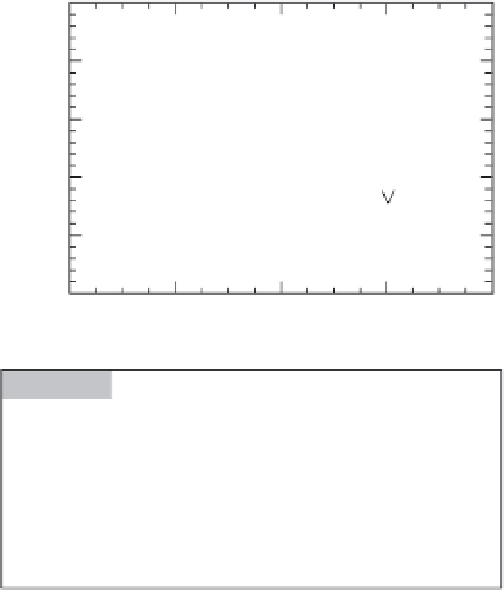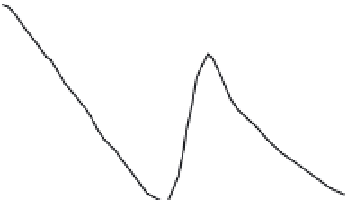Environmental Engineering Reference
In-Depth Information
6.2 Water-table fluctuation
method
successfully applied over periods of years and
decades. The method may not be appropriate if
water is transported away from the water table
at a rate that is not substantially slower than
the rate at which recharge water arrives at the
water table.
Application of Equation (
6.2
) for each indi-
vidual water-level rise will generate an esti-
mate of total or
gross
recharge. To determine
t o t a l r e c h a r g e , Δ
H
i is is e t e q u a l t o t h e d i f f e r e n c e
between the peak of the rise and low point of
the extrapolated antecedent recession curve
at the time of the peak (
Figure 6.1
). Equation
(
6.2
) also can be used to calculate net change
in saturated-zone storage over any time inter-
val (e.g. days, months, or years). This change
in storage is determined by replacing Δ
H
in
Equation (
6.2
) with Δ
H
n
, which is the differ-
ence in head between the end and the begin-
ning of the time interval (
Figure 6.1
). The
difference between recharge and net change
in subsurface storage is equal to the sum of
evapotranspiration from groundwater, base
flow, and net subsurface flow from the site.
With some additional assumptions, the WTF
method can be used to estimate any of these
parameters.
A simple water budget for some part of a
groundwater system can be written as (Schicht
and Walton,
1961
):
∆
gw
S
=− − − +
R
Q
ET
Q
Q
on
bf
gw
gw
gw
(6.1)
off
where Δ
S
gw
is change in storage in the saturated
zone (this includes all storage changes that
occur at depths greater than that of the zero-
flux plane),
R
is recharge,
Q
bf
is base flow,
ET
gw
is evapotranspiration from groundwater, and
Q
gw
off
and
Q
gw
on
are subsurface flow away from
or into the area of interest, including pumping.
All terms are expressed as volumetric rates per
unit surface area (e.g. mm/year). Equation (
6.1
)
states that changes in subsurface water storage
are attributed to recharge and groundwater flow
into the basin minus base flow (groundwater
discharge to streams or springs), evapotranspir-
ation from groundwater, and groundwater flow
out of the basin.
The water-table fluctuation (WTF) method
is based on the premise that rises in ground-
water levels in unconfined aquifers are due to
recharge water arriving at the water table. With
the assumption that the amount of available
water in a column of unit surface area is equal
to specific yield times the height of water in the
column, recharge can be calculated from:
3.6
3.7
3.8
∆
H
n
∆
S
gw
==
RS H t
∆∆
/
(6.2)
y
3.9
where
S
y
is specific yield and Δ
H
is change
in water-table height over time interval Δ
t
.
Derivation of Equation (
6.2
) assumes that water
arriving at the water table goes immediately
into storage and that all other components of
Equation (
6.1
) are zero during the period of
recharge. A time lag occurs between arrival
of water during a recharge event and redistri-
bution of that water to the other components
of Equation (
6.1
). If the method is applied dur-
ing that time lag, all of the water going into
recharge can be accounted for. This assumption
is most valid over short periods of time (hours
or a few days), although the method has been
∆
H
4.0
4.1
83
84
85
86
87
Julian day
Figure 6.1
Hypothetical groundwater hydrograph.
Recharge for the water-level rise, in terms of depth
of water, is calculated as
S
y
times Δ
H
, where Δ
H
is the
difference between the peak of the rise and low point of the
extrapolated antecedent recession curve (dotted line) at the
time of the peak. The change in subsurface storage between
days 85 and 86 is calculated as
S
y
times Δ
H
n
, where Δ
H
n
is
the difference in water level at midnight on days 85 and 86.













